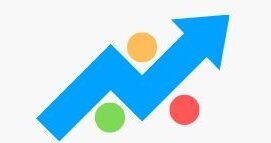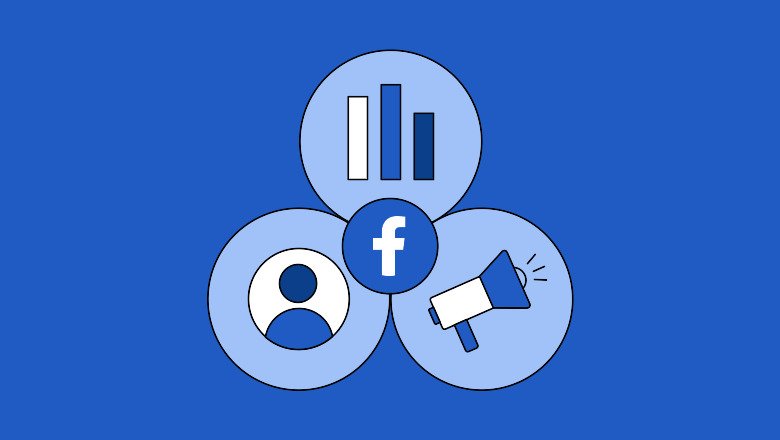“What Is Facebook Pixel and How to Use It for Better Ad Performance (2025 Guide)”
Introduction to Facebook Pixel
In today’s digital marketing landscape, understanding user behavior and tracking conversions are key to maximizing ROI. Facebook Pixel plays a crucial role in helping advertisers achieve these goals. Whether you are running a small business or managing campaigns for large-scale clients, Facebook Pixel offers valuable insights that can drastically improve your ad performance.
In this detailed guide, we will explore what Facebook Pixel is, how it works, why it’s essential, and how to set it up and use it effectively to boost your marketing strategy.
What Is Facebook Pixel
Facebook Pixel is a piece of code provided by Meta (formerly Facebook) that you place on your website. It helps you track visitor actions, measure ad performance, and build targeted audiences for future ads. Essentially, it connects your website activities to your Facebook Ads account, enabling more effective tracking and optimization.
How Facebook Pixel Works
When a user visits your website and takes an action (such as making a purchase or signing up for a newsletter), the Facebook Pixel is triggered and records that action. This data is sent back to Facebook, where it can be used to:
- Track conversions from Facebook ads
- Optimize ad delivery to users likely to take action
- Build Custom Audiences and Lookalike Audiences
- Retarget users who have interacted with your site
- Analyze user behavior to improve website performance
Why Is Facebook Pixel Important
1. Conversion Tracking
One of the primary benefits of Facebook Pixel is conversion tracking. It allows you to see how users interact with your website after clicking on an ad. You can track specific actions such as:
- Purchases
- Add-to-carts
- Leads
- Page views
- Sign-ups
This helps you understand which ads are driving results and where to allocate your budget.
2. Retargeting
With Facebook Pixel, you can retarget visitors who didn’t convert the first time. For example, if someone visited your product page but didn’t buy, you can show them a relevant ad later on Facebook or Instagram, increasing the chances of conversion.
3. Audience Insights
By collecting behavioral data, Facebook Pixel allows you to create Custom Audiences based on actions like:
- Visiting specific pages
- Spending a certain amount of time on site
- Abandoning shopping carts
This information enables precise targeting, ensuring your ads reach the most relevant users.
4. Lookalike Audiences
After collecting enough data, Facebook Pixel lets you build Lookalike Audiences, which are new users who share similar traits with your existing customers. This helps you expand your reach without sacrificing relevance.
How to Set Up Facebook Pixel
Setting up the Facebook Pixel is straightforward, especially with modern website platforms like WordPress, Shopify, or Wix.
Step 1: Create Your Pixel
- Go to Meta Events Manager: https://www.facebook.com/events_manager
- Click Connect Data Sources > Web.
- Choose Facebook Pixel, and click Connect.
- Name your Pixel and enter your website URL.
Step 2: Install the Pixel Code on Your Website
You have two main options:
Manual Installation
- Copy the base Pixel code.
- Paste it between the
<head>tags of every page on your site.
Using a Partner Integration
Platforms like Shopify, WordPress, and Squarespace have native integrations. You simply add your Pixel ID and let the platform handle the rest.
Step 3: Set Up Events
After installing the base Pixel, you need to set up Events. Events are actions you want to track (like purchases or form submissions). You can:
- Use standard events like
Purchase,Lead, orAddToCart - Create custom events for more specific actions
- Use the Event Setup Tool provided by Facebook to avoid manual coding
Best Practices for Using Facebook Pixel
1. Install Pixel Early
Even if you’re not running ads yet, install the Pixel early to start collecting valuable data. This will help you build a rich audience base and make better decisions when you launch your campaigns.
2. Track Key Conversion Events
Focus on tracking actions that align with your business goals. For e-commerce, these might be ViewContent, AddToCart, and Purchase. For lead generation, track Lead, CompleteRegistration, and SubmitApplication.
3. Use Custom Conversions
Sometimes, standard events aren’t enough. With Custom Conversions, you can define specific URLs or event parameters to track more refined actions.
4. Leverage Pixel for A/B Testing
By tracking user behavior, Pixel allows you to A/B test different creatives, landing pages, and targeting strategies. Use this data to optimize your campaigns for better ROI.
5. Maintain Compliance
Make sure your use of Facebook Pixel is GDPR and CCPA compliant. Use cookie consent banners and provide clear privacy policies explaining data collection.
Common Mistakes to Avoid
- Not verifying the Pixel: Use the Facebook Pixel Helper Chrome extension to ensure your Pixel is firing correctly.
- Tracking too many events: Don’t overload your site with unnecessary events—focus on those that bring business value.
- Using the same Pixel on multiple unrelated domains: This can confuse your data and hurt optimization.
- Forgetting to update Pixel settings after website changes: If your site layout or URLs change, double-check your Pixel settings.
Tools to Support Facebook Pixel
- Facebook Pixel Helper (Chrome Extension): Debug and verify your Pixel installation.
- Google Tag Manager: Manage all your tracking tags in one place.
- Meta Events Manager: Monitor events, configure custom conversions, and troubleshoot issues.
Facebook Pixel vs. Meta Pixel: What’s the Difference
As of recent updates, Facebook Pixel is now referred to as Meta Pixel, reflecting the company’s rebranding. Functionally, it remains the same, but expect to see “Meta Pixel” more often in Facebook’s documentation.
Final Thoughts
Facebook Pixel is one of the most powerful tools in a digital marketer’s arsenal. It provides critical data to help you understand your audience, optimize ad performance, and drive better results.
Whether you’re a beginner or a seasoned advertiser, integrating Facebook Pixel into your marketing strategy is a must. By leveraging conversion tracking, retargeting, and advanced audience insights, you can create smarter, more effective Facebook Ads that deliver real ROI.
Frequently Asked Questions (FAQs)
Q1: Is Facebook Pixel free
Yes, Facebook Pixel is a free tool provided by Meta.
Q2: Can I use more than one Facebook Pixel
Yes, you can create multiple Pixels in your Business Manager, but each should be tied to a specific business or website.
Q3: How long does Facebook Pixel store data
Facebook retains Pixel data for up to 180 days, allowing for effective retargeting.

